For details on how to install, how to measure, and how to change the combination of these keyless entry locks, click on one of the links below.
We'd love to answer any questions you have. However, we are being flooded with spam emails! So instead of filling out a form, please just give us a call. We'll be happy to help you over the phone. It usually works out better that way since there are many details to cover to make sure we recommend the right product for your specific situation. Thanks!
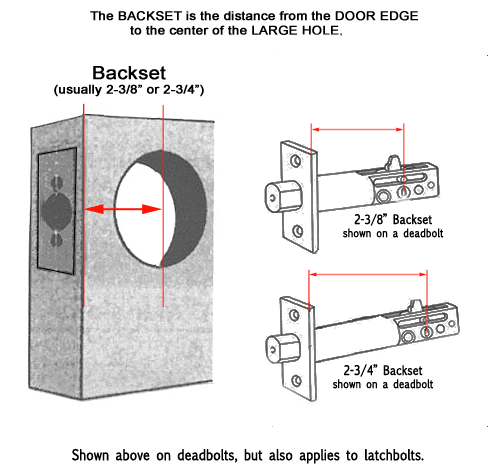
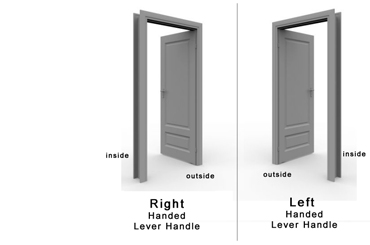
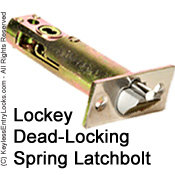
This is a dead-locking spring latch bolt. This means it has a dead latch mechanism, called a plunger, which slides in and out along its top side. When the door is closed, the strike plate presses in the plunger and prevents the latchbolt from opening independently of the handle. When properly installed, dead-locking latchbolts cannot be opened by sliding a credit card between the door and the door frame.
Spring latchbolts are normally extended when the door is ajar. As the door is closed, they come into contact with the strike plate. This pushes the spring latchbolt into a retracted position until the door lines up with the hole in the strike plate. Spring latchbolts can take quite a beating on heavy gates or doors that are slammed shut.
Lockey Spring Latchbolt Dimensions |
||||
| Height of Face Plate: | 2-1/4 in | |||
| Width of Face Plate: | 1 in | |||
| Length of Spring Latchbolt: | 4 in | |||
| Diameter of Spring Latchbolt: | 3/4 in | |||
| Protrusion: | 1/2 in | |||
Failure to follow the instructions could result in damage to your lock
so please read carefully.
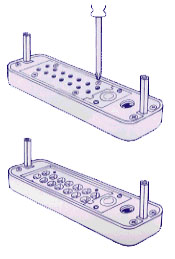
![]()
Hold the outside body in the horizontal position.
Remove the 4 red screws. Carefully remove the plate, as there are many springs attached to it.

![]()
You must press in the C button from underneath until you have completed the code change, as it is impossible to lift out or insert the code tumblers if you don't. Forcing them will damage the lock.
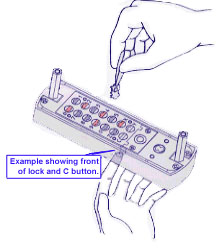
![]()
There are blue tumblers (non-code) and red tumblers (code). Your code is made from the red tumblers always prefixed by C to clear.
Never remove the C tumbler.
While continuing to press in the C button, using the tweezers provided, lift out the code / non-code tumblers you wish to change.
When you re-insert the code/non-code tumblers for your new code you must continue to press in the C button.
![]()
While pressing in the C button make sure that the colored top end of
the tumbler is facing upwards. Match the shape of the tumbler to the exact cut insert of the body.
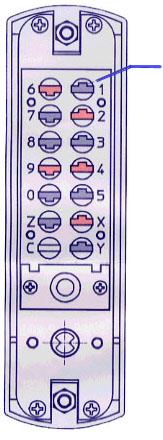
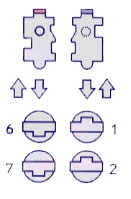
Cut Example:
The code is made up of the numbers which have the red tumblers inserted next to, this shows C2469X.
Remember the red tumblers are the code and the blue tumblers are non-code.
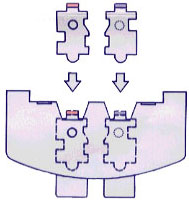
Using the tumblers provided you can change your code from a
3 digit number up to a 7 digit number, always prefixed by C to clear.
To increase, remove the blue and add the red.
To decrease, remove the red and add the blue.
If you insert a tumbler in the wrong position, press in the C button and lift the tumbler out.
![]()
When you have completed changing your code, release the C button and replace the plate carefully. Always test your new code before installing/re-installing your lock to the door.
| The finish on the exterior and interior sections of the lock is the same for all models except for the Lockey M213 Lock (which only comes in Satin Chrome on the inside). Finishes are subject to availability. |
|
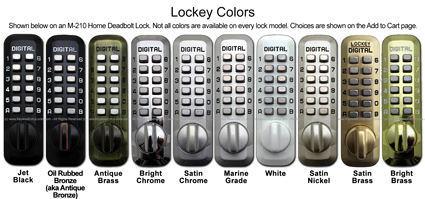 |
All our locks are constructed of high-quality, alloyed steel, stainless steel, or brass component |
| (click to enlarge) . | |
The following options are available:
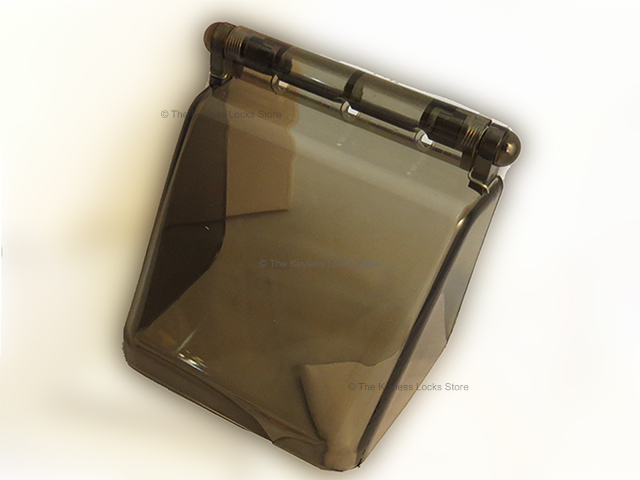 typically don't work as well in the cold, so during periods of low temperatures, you might need to use the metal key to open the lock.
typically don't work as well in the cold, so during periods of low temperatures, you might need to use the metal key to open the lock.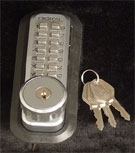 |
|
Built-in Key Override |

Possible Lock Combinations |
|||
|---|---|---|---|
| Lock | Digits You Can Use |
Can Digits Repeat? |
Total Possible Combinations |
| 1150,1150DC,115P | 0-9, A, B | No | 4095 |
| 1600,1600DC,160P | 0-9, A, B | No | 4095 |
| 2200 | 0-9, X, Y, Z | No | 8191 |
| 2210,2210DC | 0-9, X, Y, Z | No | 8191 |
| 2500 | 0-9, X, Y, Z | No | 8191 |
| 2230,2230DC | 0-9, X, Y, Z | No | 8191 |
| 2830,2830DC | 0-9, X, Y, Z | No | 8191 |
| 285-P | 0-9, X, Y, Z | No | 8191 |
| 2835,2835DC | 0-9, X, Y, Z | No | 8191 |
| 2900,2900DC | 0-9, X, Y, Z | No | 8191 |
| 2930,2930DC | 0-9, X, Y, Z | No | 8191 |
| 2950,2950DC | 0-9, X, Y, Z | No | 8191 |
| 2985,2985DC | 0-9, X, Y, Z | No | 8191 |
| 310P | 0-9, X, Y, Z | No | 8191 |
| 3210,3210DC | 0-9, X, Y, Z | No | 8191 |
| 3830,3830DC | 0-9, X, Y, Z | No | 8191 |
| KEYSAFEBOX | 0-9, A, B | No | 4095 |
| LLKZ | 0-9 | No | 5040 |
| M210,M210DC | 0-9, A, B | No | 4095 |
| M220 | 0-9, A, B | No | 4095 |
If you did not find an answer to your question above, please click here to send us an email. We'll get back to you as soon as possible, usually within 1 business day.